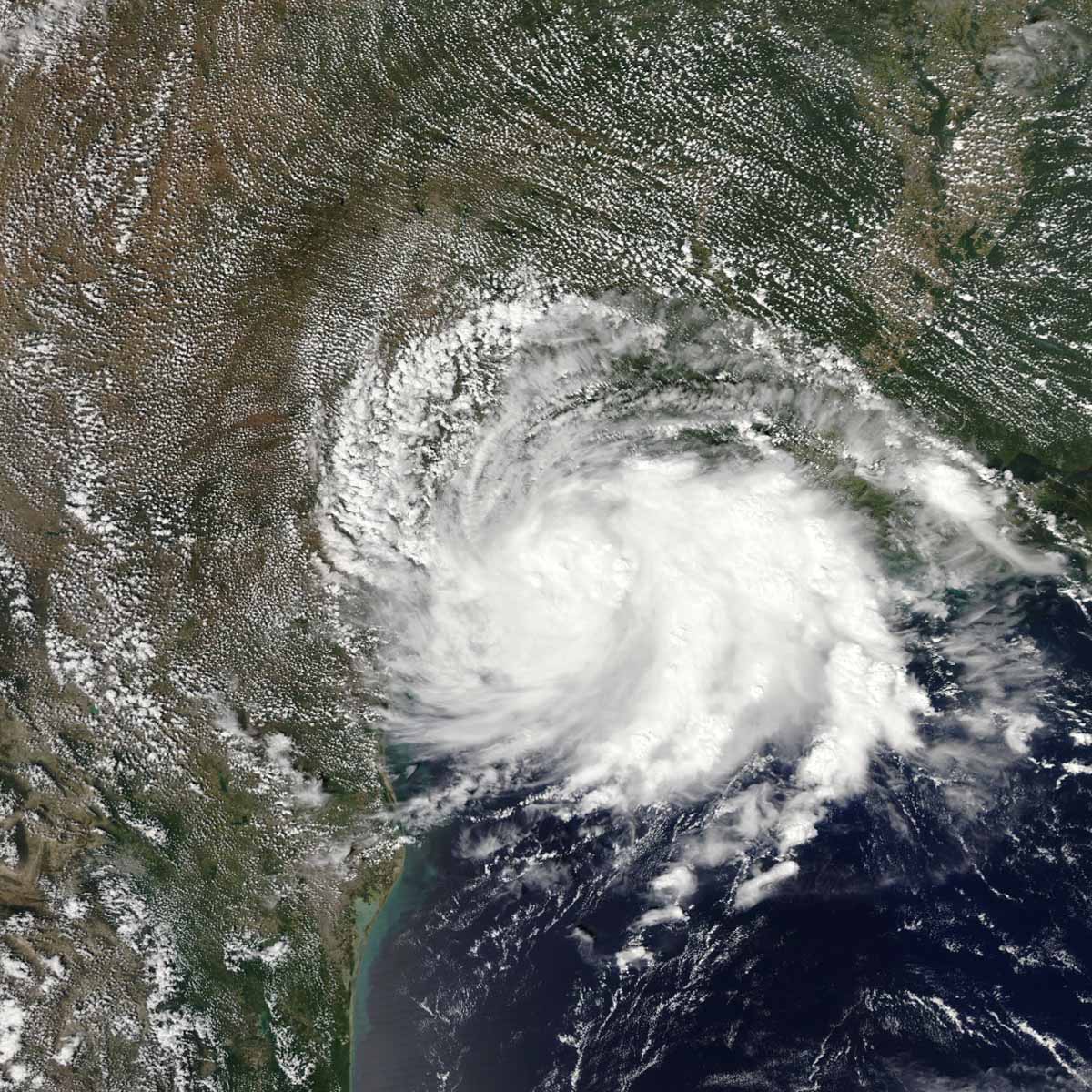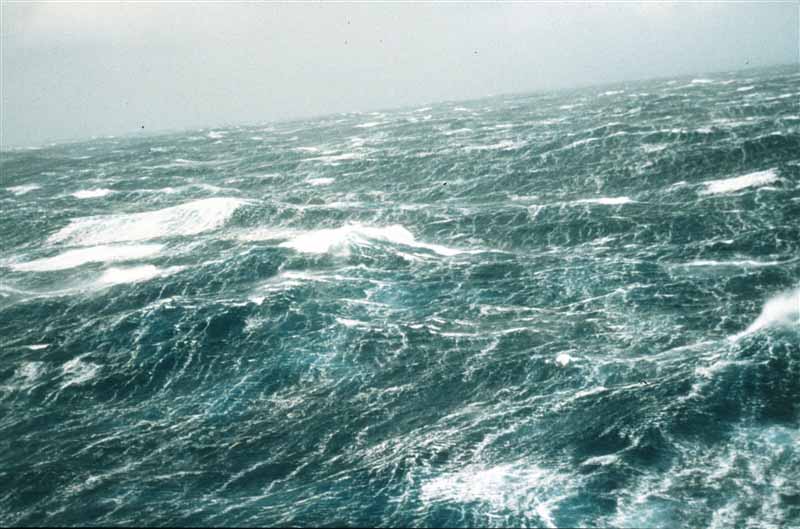Though not at the same intensity level as hurricanes, tropical storms can still do a tremendous amount of damage. Even with lower wind speeds than larger tropical cyclones, a tropical storm can still dump massive amounts of precipitation over an area. This can cause flooding and other dangerous consequences. Flooding often brings the destruction of homes, businesses, roads and can even take lives. This was the case with tropical storm Imelda which dumped an enormous amount of rain over southern Texas, resulting in extensive destruction.

[widgets_on_pages id=”Accordion Block”][ppmpreaccordion]
Tropical Storms and Tropical Disturbances
A tropical storm is one of four major classifications of a tropical disturbance. A tropical disturbance refers to organized patterns of wind of a certain speed that is sustained over a certain time period. At the lower end, you have a tropical depression with precipitation and slower, less formidable winds. As these wind speeds increase, the system moves into the more serious classification of tropical storm. Tropical storms can still do considerable damage even though they are under the windspeed threshold that would make them a hurricane.
Here are some common questions and answers about tropical disturbances and tropical storms.

Be ready for the next tropical storm with our Prepared Families Guide.
Learn how to social distance during storms and natural disasters by checking out these tips
Learn about hurricanes through answers to the most common hurricane questions as well as hurricane facts.

[/ppmpreaccordion][ppmaccordion][ppmtoggle title=”What is a tropical storm?”]
The term tropical storm refers to a storm whose wind speed ranges from over 38 miles per hour to less than 74 miles per hour.
[/ppmtoggle][ppmtoggle title=”When does a tropical storm become a hurricane?”]
The wind speed determines the point at which tropical storms classification changes. When it is over 74 miles per hour it becomes a hurricane. You can find out more about the characteristics of hurricanes at our Hurricane FAQ page.
[/ppmtoggle][ppmtoggle title=”Where do tropical storms originate?”]
Tropical storms originate as warm moist air in the tropics. The warm air rises and begins to revolve around an eye, forming the storm.
[/ppmtoggle][ppmtoggle title=”Can tropical storms cause damage?”]
While not as powerful as hurricanes, tropical storms can still cause a lot of damage. Tropical storms bring large amounts of precipitation, which can lead to flooding in an area. Flooding can destroy homes, cars, buildings, and endanger lives.
[/ppmtoggle][ppmtoggle title=”What are some examples of tropical storms that did immense damage?”]
In 2001, Tropical Storm Allison dumped huge amounts of water over Texas in a five day period destroying thousands of homes. Another storm that did extensive damage was Tropical Storm Imelda. Imelda struck southern Texas in 2019. It brought massive flooding. Even without the powerful winds of a hurricane, this storm made its mark. The flooding it produced destroyed homes, businesses, and made roads impassable.
[/ppmtoggle][ppmtoggle title=”How much more powerful is a category 1 hurricane than a tropical storm?”]
The classification of hurricanes comes with higher wind speeds. After wind hits 74 miles per hour, the storm reaches the category 1 classification. This could be almost twice as severe as a tropical storm with weak winds at 39 miles per hour, or only slightly more severe than a tropical storm just below the change in classification with wind speeds as high as 73 miles per hour.
[/ppmtoggle][ppmtoggle title=”How is a tropical storm different than a tropical depression?”]
A tropical depression refers to storm activity with wind speeds slower than 39 miles per hour.
[/ppmtoggle][ppmtoggle title=”What is a tropical disturbance?”]
Tropical disturbances are organized formations of storm systems in the tropics. Tropical storms, tropical depressions, tropical waves, and hurricanes are all types of tropical disturbances.
[/ppmtoggle][ppmtoggle title=”What is a tropical wave?”]
This is the least powerful form of a tropical disturbance. It features wind speeds of less than 26 miles per hour.
[/ppmtoggle][ppmtoggle title=”What is a tropical storm watch?”]
A tropical storm watch refers to a situation where a tropical storm poses a potential threat to an area or coastline. It does not mean it is guaranteed to strike but is issued to give people advanced notice of a potential threat.
[/ppmtoggle][ppmtoggle title=”What is a tropical storm warning?”]
A tropical storm warning means a tropical storm is imminent. The tropical storm in question will strike an area at a specified point and time.
[/ppmtoggle][ppmtoggle title=”Is there a way to help with the recovery after tropical storms?”]
Non-profit organizations like Operation Blessing prepare year after year with supplies, volunteers, and trained staff that go into action quickly after a storm hits. They provide relief to embattled areas that have been reduced to mere survival due to a storm.
[/ppmtoggle][ppmtoggle title=”How can I get involved and help after a tropical storm hits?”]
Check out our disaster relief volunteer page to see ways you can volunteer after a storm strikes.
[/ppmtoggle][ppmtoggle title=”How can I track active tropical storms near me right now?”]
The National Oceanic and Atmospheric Administration offer a tracking page. It shows what tropical storms or hurricanes are active in the Caribbean, Gulf, and Atlantic.
[/ppmtoggle][ppmtoggle title=”What resources can I use to be prepared for a tropical storm or hurricane?”]
There are lots of resources through sites like FEMA, the NOAA, and Operation Blessing to prepare for what follows a tropical storm or hurricane. This site offers a number of tools that can be of assistance in your tropical storm preparation. We even provide information on how to social distance during a natural disaster. We also offer a prepared families guide, filled with tropical storm preparation ideas, checklists, and meal ideas.
[/ppmtoggle][/ppmaccordion][/widgets_on_pages]
“Stages Of Hurricane Development. The Growth Of A Hurricane.” Hurricaneville.Com, 2019, www.hurricaneville.com/stages.html.
“Tropical Storm Imelda.” Wikipedia, 6 June 2020, en.wikipedia.org/wiki/Tropical_Storm_Imelda. Accessed 15 July 2020.
“Tropical Storms Can Be Devastating and Deadly.” The Weather Channel, weather.com/storms/hurricane/news/tropical-storm-depression-rain-flood-deadly-damage-allison.
US Department of Commerce, NOAA. “Tropical Definitions.” Www.Weather.Gov, www.weather.gov/mob/tropical_definitions.
Weather.Gov, 2020, www.weather.gov/images/wrn/hurricanep-preparedness/2020/HPW-2020-actions-today-3.png. Accessed 16 July 2020.
